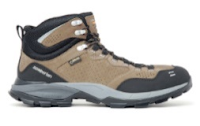There is a worrying trend that I have noticed lately. Since relocating to Seattle, I have had the
phenomenal opportunity to explore the Pacific Northwest. It has been
spectacular beyond belief and I have been able to see some natural beauty that was beyond my wildest imagination. Check out this picture from a hike that was
relatively close to Seattle:
Snow Lake, September 2019
As you can
see, this is an area that is ripe with adventure. Access to hikes in the Cascades is
one of the biggest draws to this region. However, one thing I have noticed is that
more and more, it seems that there is an invisible gatekeeping that
has started to surround pursuing outdoor adventures. The growth of outdoor
companies such as The North Face, REI, and L.L. Bean has led to an increase in
awareness for the greatness that is spending time outdoors. However, I have a
concern that the rise of these companies may also be excluding those who are
less fortunate from outdoor pursuits. Let’s look at the price of what my hike
would cost if I bought my supplies from one of these outdoor companies:
|
Item
|
Picture
|
Price
|
|
Northwest Forest Pass
|
$30.00
|
|
|
Jacket
|
$69.73
|
|
|
Hiking Boots
|
$94.73
|
|
|
Pants
|
$55.73
|
|
|
Socks
|
$8.73
|
|
|
Hat
|
$25.00
|
|
|
Hiking Day Pack
|
$55.93
|
|
|
Yak Tracks
|
|
$19.95
|
|
Water Bottle
|
$6.75
|
|
|
Hiking Sticks
|
|
$49.73
|
|
Trail Food/Snacks
|
$7.00
|
|
|
|
Total:
|
$416.28
|
This list
does not even account for the costs of transportation (gas is >$3!) and
other essentials that I may have forgotten. As you can see, if you were to deck
out to go hiking in the gear these companies suggest, the cost would be
astronomical. By the way, this list was created using gear that was on sale,
most of which was offered at outlet prices. There were many options out there
for which you could easily pay much, much more.
I want to
acknowledge that you do not need to buy all these things to go hiking. When I go on
hikes though, I tend to see a lot of hikers using this kind of gear. I worry
that if everyone’s image of hiking is that they need a cool outfit to
get the most out of their hike, it will keep people who can’t afford that gear from
trying it out. What is starting to get perpetuated is a myth that enjoying the
outdoors is only for those with money. Social media, such as Instagram, is only helping further this divide.
Speaking of Instagram, did you know this blog has an Instagram account? Follow @allthingsnaturalist on Instagram to follow along on some of the cool outdoor adventures I have been having. And don’t worry, I promise I won’t be perpetuating any myths that you need nice stuff to enjoy the outdoors. Awesome nature photos only! [/end shameless plug]
What I hope
people take from this post is that you don’t need expensive gear to get outdoors. While
marketing teams for outdoor companies may want you to believe that that the opposite is true, a lot of the gear I listed can be swapped for more affordable
options. I hope you enjoy the fall weather and remember: If you want to make a difference,
get outside!












